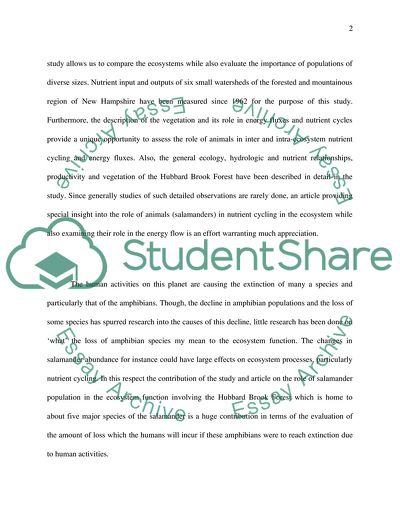Energy Flow and Nutrient Cycling in Salamander Populations Book Report/Review. Retrieved from https://studentshare.org/environmental-studies/1562014-please-see-article-below
Energy Flow and Nutrient Cycling in Salamander Populations Book Report/Review. https://studentshare.org/environmental-studies/1562014-please-see-article-below.


